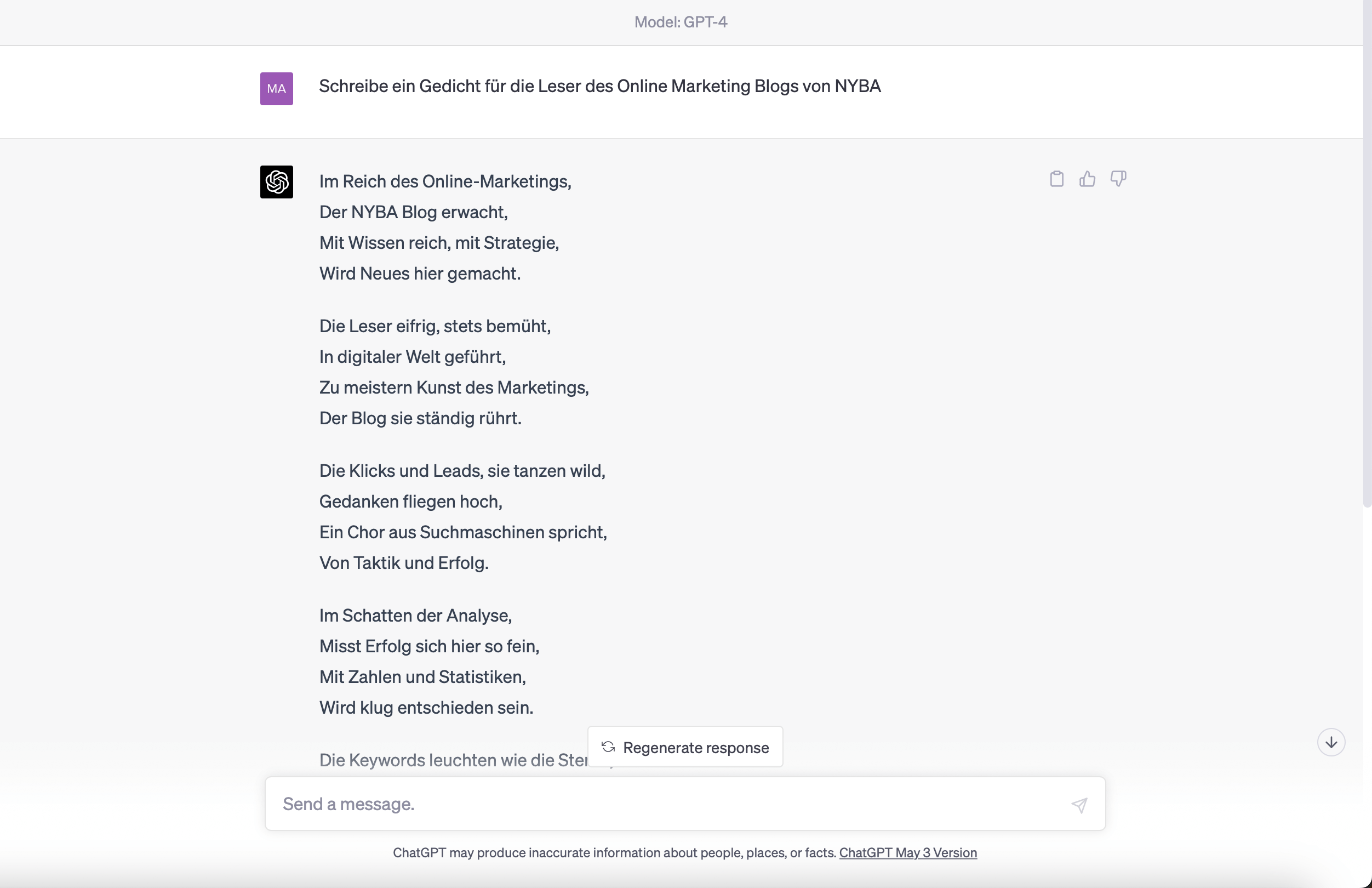ChatGPT – An Overview of the Text AI
Everything you need to know about ChatGPT.
What is ChatGPT and How Does OpenAI’s Software Work?
ChatGPT stands for "Conversational Generative Pre-trained Transformer." It is an AI model based on the GPT architecture, developed by OpenAI. The term "Chat" refers to the model’s ability to communicate in natural language and support dialogue-oriented applications.
ChatGPT is a text-based AI assistant designed to engage in human-like conversations with users while providing helpful, coherent, and relevant responses. It can be used for a variety of applications, such as text generation, answering questions, or assisting users with complex problem-solving.
ChatGPT is built on a model called "Transformers," a type of neural network. Its core component is the "attention mechanism," which enables it to link information from different parts of the text and understand complex relationships.
Is ChatGPT Free?
Yes, ChatGPT is available for free in its standard version (GPT-3.5) via the web browser.
➤ Access ChatGPT here.
Which Company Owns ChatGPT? – OpenAI
OpenAI was founded in December 2015 and has become a leading organization in AI research. Founders include Elon Musk, Sam Altman, Greg Brockman, Ilya Sutskever, John Schulman, and Wojciech Zaremba. Their mission was to advance AI for the benefit of all humanity, rather than being monopolized by a few.
Elon Musk, known for SpaceX and Tesla, has publicly expressed concerns about AI as a potential existential threat without proper regulation. As a co-founder of OpenAI, he influenced its focus on creating safe and accessible AI. Even after leaving OpenAI’s board in 2018, Musk’s concerns continue to shape public discourse on AI ethics and safety.
Where Does ChatGPT Get Its Knowledge and How Current Is It?
ChatGPT was trained on a large corpus of text from various sources, including books, articles, websites, and other documents. It learns patterns and relationships in these texts to generate human-like responses.
It is important to note that ChatGPT is a statistical model and does not have a deep understanding of the world. Its knowledge is based on the data used for training, which in this case is current up to September 2021, so it may not be aware of recent events.
Applications and Tips for Using ChatGPT
- Information Retrieval: Ask questions and receive answers on a wide range of topics.
Tip: Be specific and provide context for more accurate responses. - Education and Learning: Use ChatGPT as a tutor or for homework help.
- Creative Writing: Generate stories, scripts, poems, and more.
Tip: Provide prompts or bullet points to guide creativity. - Business Communication: Draft emails, reports, or presentations.
- Customer Support: Act as a virtual assistant for user inquiries.
- Translation: Translate texts between languages.
- Technical Support: Answer questions about software or hardware issues.
- Planning & Structuring: Create outlines for essays, presentations, or projects.

Common Errors and How to Solve Them
- Content Errors: ChatGPT can give outdated or incorrect information. Solution: Verify with reliable sources.
- Imprecise Answers: Often caused by unclear questions. Solution: Ask precise questions with context.
- Repeated Information: Can happen due to training data. Solution: Limit response length or give feedback.
- Inappropriate Content or Tone: Occasionally occurs. Solution: Use content filters and provide feedback on tone.
- Context Loss: May fail to use prior conversation context. Solution: Provide sufficient context or repeat key information.
- Technical Issues: Network interruptions or token limits may cause incomplete responses. Solution: Check connection, continue prompts, or provide new input.
Using ChatGPT in German
ChatGPT understands and responds in multiple languages, including German, and can handle complex grammar, cases, and reflexive pronouns. It can generate accurate and creative German text for formal and informal contexts.
ChatGPT 3.5 vs. ChatGPT 4
- Scaling: GPT-4 has more neurons and parameters for better understanding.
- Training Data: GPT-4 uses an updated dataset for improved performance.
- Capabilities: GPT-4 generally produces more coherent and relevant responses.
- Efficiency: Optimized processing allows faster responses.
GPT-4 is only available through the ChatGPT Plus subscription.
ChatGPT Plus – Costs and Benefits
- Subscription: $20/month
- Benefits: Priority access to features, faster response times, higher usage limits, premium support, and exclusive training resources.
Bypass ChatGPT Restrictions with a VPN
If ChatGPT is blocked in your region or institution, a VPN can provide access without limitations.
OpenAI API for Developers
Allows integration of ChatGPT and other OpenAI models into apps, products, or services for:
- Automated text generation
- Question-answer systems
- Translation
- Chatbots and virtual assistants
- Sentiment analysis
Popular Alternatives to ChatGPT
- Jasper Chat: GPT-4 based, supports code, accesses live online data, costs $39/month.
- Chatflash (Neuroflash): GPT-4 based, excellent for German, does not access live online data.
- Chatsonic (Writesonic): Accesses live data, supports 24 languages, no coding capability.
Image Note: This content was created by NYBA using AI.
ChatGPT: Everything You Need to Know About the OpenAI Bot | NYBA AG
What is ChatGPT? How does it work? Most common use cases, errors, solutions, and alternatives.
























